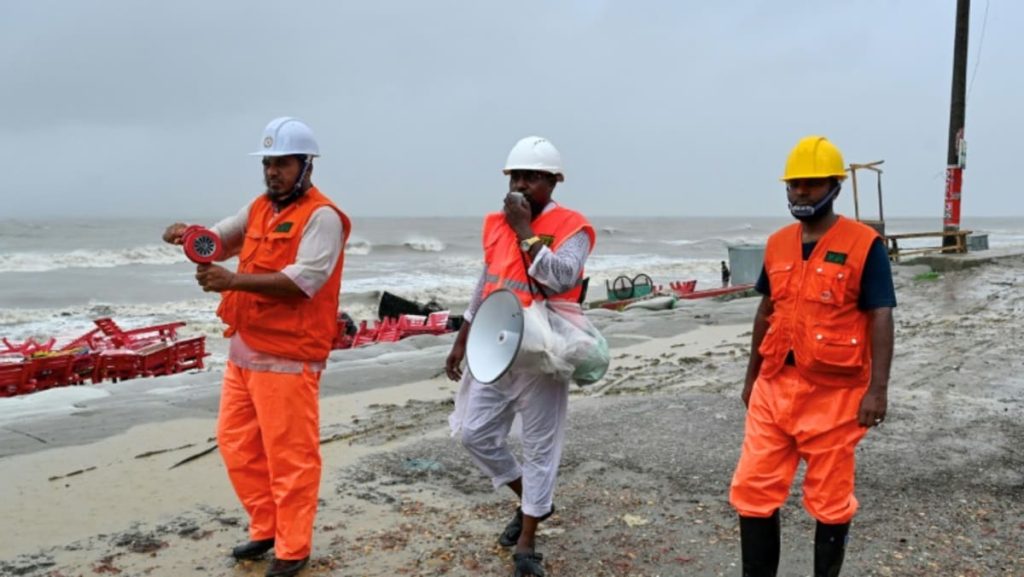An intense cyclone hit the low-lying coast of Bangladesh, forcing nearly a million people to flee to storm shelters. The Cyclone Remal was forecasted to bring gusts of up to 130kmh, heavy rain, and strong winds. With Bangladesh experiencing an increase in the number of superstorms hitting its coast due to climate change, authorities raised the danger signal to its highest level. The potential storm surge of up to 4m above normal tide posed a significant threat to the coastal areas, most of which are only a meter or two above sea level.
Fisherman Yusuf Fakir, residing in the predicted route of the cyclone, expressed fear and sent his family to a relative’s home inland while he stayed to protect their belongings. Over 800,000 Bangladeshis fled their villages, and more than 50,000 people in India also moved inland from the Sundarbans mangrove forest. Government ministers and disaster officials in both countries were focused on ensuring the safety of residents and preventing loss of lives. The impact of cyclones and storm surges can devastate coastal villages, highlighting the urgent need for evacuation to safer locations.
With Bangladesh being prone to cyclones that have claimed hundreds of thousands of lives in recent years, the increased frequency of superstorms poses a significant threat to the densely populated coastal areas. The Bangladesh Meteorological Department warned of wind speeds reaching 90kmh and the possibility of further acceleration. The cyclone was expected to continue affecting the coast until the early hours of Monday morning, bringing more destruction and potential risks to the residents. The impact of climate change has led to more extreme weather events like cyclones, exacerbating the vulnerability of communities in affected areas.
The Bangladesh Meteorological Department issued alerts and warnings about the cyclonic conditions, urging residents to seek safety in storm shelters. The combination of high wind speeds, heavy rain, and potential storm surges created a dangerous situation for those living in low-lying areas. Authorities in both Bangladesh and India worked to coordinate evacuation efforts and ensure the protection of people in the path of the cyclone. The unpredictability of these natural disasters underscores the importance of preparedness and rapid response to mitigate their impact on vulnerable communities.
The town of Kuakata, located at the southern tip of Bangladesh, was bracing for the impact of the cyclone as residents took precautions to protect themselves and their belongings. Fishermen like Yusuf Fakir were among those making difficult decisions to ensure the safety of their families, highlighting the challenges faced by coastal communities during cyclonic events. The evacuation efforts aimed to move vulnerable populations to safer locations away from the storm’s path, reducing the risk of casualties and damage to property. Disaster management agencies in both countries were on high alert, coordinating rescue and relief operations in the aftermath of the cyclone.
As the cyclone battered the coast of Bangladesh and India, the focus remained on protecting lives and preventing casualties. The vulnerable geography of coastal regions, coupled with the impact of climate change, highlighted the urgent need for sustainable disaster preparedness and resilience-building measures. The collaboration between government agencies, disaster response teams, and local communities was crucial in ensuring an effective response to natural disasters like cyclones. The aftermath of the cyclone would require significant efforts in terms of rescue operations, infrastructure repair, and support for affected populations to rebuild their lives in the wake of the storm.


